#highly digitized production system
Explore tagged Tumblr posts
Text
One of the countless parts of cultural exchange between Coalition species is the introduction of various forms of entertainment. Digital or "Video" games included.
From what we had already seen in their other forms of media and actual history in general, we expected there to be a great variety, including of the violent kind. Still, it was quite shocking to see how many of their games, particularly the "First Person Shooters" had "enemies" that eerily resembled many different species among the stars before they had ever made first contact with us. Though most of their visuals were more vicious and brutal than the actual counterparts, the similarities were still off-putting. The "kill moves" in many of these games were too disturbing though. Their imagination is... vivid.
As we examined and played more of these games, we noticed many of the "mechanics" were very illustrative of Human nature at large.
Tactical games with highly specialized individuals working together in small group to accomplish otherwise impossible goals.
Role-playing games where an individual or a very small team, using countless tools, tricks, and sometimes pure grit, overcome the odds and emerge victorious.
Strategy games where you construct an elaborate and efficient system of production and distribution, manage large forces, and exploit every resource to maximize your advantage before overwhelming the opponent with insurmountable force.
We also tried their Virtual Reality games, but the visual stimulus was simply too much for many of us, and some were simply incapable of playing them due to the forward-facing constricted view Humans have. It felt so claustrophobic, yet Humans sometimes seem to have a greater degree of perception than those of us with literal eyes on the backs of our heads.
One other common theme we noticed, particularly in "adventure" games, was the incentive to be a kleptomaniac.
"You never know when you might need it!"
Was the typical response.
Given their behavior in regards to planetary moons that they've displayed in recent times, that checks out too.
Bloody magpies.
#humans are space orcs#humans are space oddities#humans are space australians#humans are deathworlders#humanity fuck yeah#carionto#aliens and video games#cultural exchange
122 notes
·
View notes
Text
The Origin & Evolution of Correspondences in Witchcraft
This post was shared a week early over on my Patreon! Working a day-job and running a blog full-time is a ton of work, so any support is insanely appreciated! Patrons will receive early access to content, exclusive content such as research notes and book recommendations, free tarot readings, access to a private Discord channel within my server, discounted products from my Etsy store, free digital files, voting power on my content, and MUCH more! Check it out here for as little as $2/month.
If you’ve been a witch for a while, you’ve probably asked yourself: where do correspondences come from? Who decided that lavender was good for calming, or that obsidian was good for absorbing negative energy? Where does the concept of correspondences come from in the first place? To answer these questions, we must first look at something called “correlative thinking”: Marcel Granet (1884-1940), a French sociologist, coined the term “correlative thinking”, which can be defined as “thinking of an item of one class by correlating it with an item of another class”, typically organizing and relating “natural, political/social, and cosmological data in highly ordered arrays or systems of correspondence.” Sound familiar?
Correlative thinking takes many forms throughout religion, philosophy, and humanity – even showing up as early as Mesopotamia, where they believed events on earth ran parallel to events in heaven: “each city-state had its own patron god and every change in the balance of power between the city-states was seen as the direct reflection of a change in the relationship of the gods.” (Cavendish, pg. 12) In ancient Greece and among Hellenic philosophers, they came up with the “macrocosm/microcosm” analogy, which describes the relationship between the smaller, human being (the microcosm) with the much bigger, seemingly infinite cosmos (the macrocosm).
This correlative thinking is prevalent in many magical texts throughout the years – including The Emerald Tablet (late 8th-early 9th century), The Picatrix (a 9th century Arabic grimoire), The Key of Solomon (1312), and the Three Books of Occult Philosophy (1533). After the publication of The Three Books of Occult Philosophy and the boom of new-age spiritualism in the 1970s, there have been a massive number of publications related to witchcraft, correspondences, ritual magic, and more. For the purpose of this post, however, we’ll be focusing on these foundational texts to better understand the evolution and origin of correspondences.
The Emerald Tablet, dated around the late 8th-early 9th century, is one of the most highly influential texts within the philosophical and occult realm. An English translation of a line of text within The Emerald Tablet provides one of the most popular terms among new agers and modern pagans: “That which is above is like to that which is below, and that which is below is like to that which is above”. A shortened version of this phrase, “as above, so below”, can be found in Helena Blavatsky’s work, Isis Unveiled (1877), where it became massively popularized among the modern pagan community. This phrase, along with terms related to correlative thinking, tie back to many cultures – including China, India, and more.
The Picatrix, 9th-century Arabic grimoire on astrological magic, is yet another influential piece of text. This text contained astrological magic, magical potions and spells, and different Hermetic, Neoplatonic, and Aristotelianism philosophical passages – and it also included the explanations of links between planets and intangible objects such as colors and perfumes/fragrances.
After a few series of translations in the 12th and 13th centuries, the information within the Picatrix (and other sources) were recorded and arranged by Henry Cornelius Agrippa (1486-1535) in his work, Three Books of Occult Philosophy in 1509 (not being published until 1533). From there, Dr. John Dee (1527-1604) expanded on Agrippa’s work in the 1580s and 1590s.
Shortly after, in 1620, the Magical Calendar was published, which compressed much of the previous material. This calendar, amazingly recorded on one page, “contains tables of correspondences arranged by number, from one to twelve. The material is based largely on the extensive tables in Agrippa, book II, but goes beyond this, especially in its inclusion of sigils.” (Skinner, pg. 14)
Moving onto another incredibly influential text, The Signature of All Things, published by Jakob Bohme in 1764, covers a similar concept to correlative thinking known as ‘the doctrine of signatures’: God created everything on Earth with a “signature”, or sign, that tells you what that object’s purpose is. The idea is that any plant, herb, or object on earth should resemble what it’s purpose is – for example, walnuts (which look like brains) are used for brain health, and tomatoes (which are red, plump, and contain ventricles like the human heart) are used for heart health. Obviously, this concept was adopted in the context of medicinal use – by looking up an object’s signature within this book, a physician could theoretically find treatments for specific illnesses. While the contents of this book (and similar texts) have been debunked as pseudoscience, the influence of the doctrine of signatures is prevalent in witchcraft correspondences today.
In 1888, the Hermetic Order of the Golden Dawn was founded, and during that time S L MacGregor Mathers (1954-1918) and Dr. Wynn Wescott (1845-1925) prepared knowledge lectures for the Order, which eventually led to the generation of a Book of Correspondences (unpublished). According to Adam McLean in his edition of The Magical Calendar, this book circulated among members of the inner order of the Hermetic Order of the Golden Dawn, and was later published by Aleister Crowley as his own work, Liber 777 (1909). Meanwhile, in 1908, The Kybalion (an anonymously written text, though often attributed to William W. Atkinson [1862-1932]) was published, including topics like “The Principle of Correspondence” and “The Planes of Correspondence”.
From here on, we have an uproar in magical texts, thanks to the new-age/spiritualism movement of the 70s and 80s – popular authors like Gerald Gardner, Scott Cunningham, Ray Buckland, and many others published works on the subject of magic, often including their own correspondences, typically influenced or inspired by the works of Crowley, Mathers, and Atkinson. Of course, the contents of these modern texts are what is most recognizable to practitioners today – we usually find tables of information, relating astrological signs, herbs, planets, feelings, colors, and more to their “meanings”: protection, anti-stress, happiness, love, etc.
As it stands, correspondences are a by-product of the ‘correlative thinking’ concept we covered earlier – this correlative thinking shows up in Mesopotamia, and evolved throughout magical texts and grimoires, eventually becoming these “tables of magical correspondences” that we are familiar with seeing in modern witchcraft and pagan books and resources.
As I round off this post, I want to share a quote from Richard Cavendish in his book, The Black Arts: “Man is a tiny replica of the universe. If two things are naturally associated together in the human mind, which is an image of the ‘mind’ of the universe, this is evidence of a real connection between the two things in the universe. Many of the important magical analogies and connections are not natural to most people’s minds today, but have been handed down by tradition from the remote past. This enhances their value for occultists, who believe that humanity was a great deal wiser in these matters in the remote past than it is now.” As practitioners, particularly modern practitioners, I feel we put too much emphasis on older concepts and traditions. While there’s nothing necessarily wrong with sticking to traditions and building off of older magical systems, I think it’s just as important that we work on our own magical systems – what does the color red mean to you? What about the planet Jupiter? Find out what works for you – you may find that it makes you feel more connected to your craft and your practice, and your workings could become more powerful, too.

Sources/Further Reading:
Dictionary of Gnosis & Western Esotericism by Wouter Hanegraaff
Three Books of Occult Philosophy by Heinrich Cornelius Agrippa
The Signature of All Things by Jakob Bohme
The Black Arts by Richard Cavendish
A History of Magic, Witchcraft and the Occult by DK
The Complete Magician’s Tables by Stephen Skinner
Neurobiology, Layered Texts, and Correlative Cosmologies: A Cross-Cultural Framework for Premodern History by Farmer et al
https://youtu.be/p0z3MuuB9uc
https://youtu.be/gYSGSjU84vE
https://www.youtube.com/watch?v=gx1av438mLY
https://www.patheos.com/blogs/matauryn/2018/06/03/magickal-correspondences/
https://howardchoy.wordpress.com/tag/correlative-thinking/
https://www.researchgate.net/figure/An-abstract-diagram-meant-to-illustrate-the-perfectly-correlative-structure-of-the_fig4_237249544
https://swedenborg.com/emanuel-swedenborg/explore/correspondences/
#correspondences#thevirginwitch#witchcraft#witchcraft 101#witchcraft 102#witchcraft 201#witches#witches of tumblr#pagan#beginner witch#witch history#reading materials#witch#magic#grimoire#book of shadows#astrology#astrological magic#astrological#planetary magic
215 notes
·
View notes
Text
ALRIGHT, IT'S TIME!
THE SECOND RYUKI-AND-BLADE-ACCOMPANYING ANIME POLL IS NOW HERE!!!
SO, MEET YOUR CHALLENGERS!
AJIN Demi-Human
youtube
We start with a dark horror and possibly scifi about ethics in science, immortality, and an outlaw fugitive alien plot as a boy finds himself part of a group of immortals declared legally inhuman. While I have some misgivings about Oh No I Was Secretly A Creature All Along plots, I do fucking love horror and there’s a lot of ways for those plots to hit hard in the trans and gay and autism organs and be really important!!!!
Dimension W
youtube
The New Tesla Energy Corporation has monopolized the fourth dimension and the coils that connect to it. A duo of bounty hunters, one human and one robot, make money via repossessing illegal coils and seek out the answer to the mysteries within the dimension. I really wanna watch this one for a few reasons, the primary one of which is 'there are multiple fat women'. It seems to have freaks and weirdos and fun times, and its comedy is emphasized more than most of the other ones on this list so it might give some needed levity!
Kyoukai no Kanata
youtube
A bumbling monster hunter with blood powers meets an immortal via trying to shank him and ends up in an arrangement where she'll keep trying to kill him to boost her confidence while hunting monsters in what I hope is a monster-of-a-week show that came highly recommended by a friend as her favorite anime, or one of her favorites, so i have high hopes! Script's by the hibike euphonium guy and the power system seems quite interesting!
Air
youtube
A puppeteer (if he’s as good as Sakon will remain to be seen) stops his Road Trip To Meet A Golden Sun Jupiter Summon to stay for a bit in a town and, as happens to anyone who stops for too long, gets attached to the place and also meets a girl who might be said jupiteresque being. My friend informs me that it's gorgeous, sounds amazing (so I'll make sure to get clips), and has "nice sad vibes"!!! And it’s…listed in a “provincial horror” listing… hoho
Heike Monogatari
youtube
A child who can see ghosts and the future walks tirelessly through the tragedy of the war between the Taira and Minamoto families before the dawn of the first shogunate. It's wildly beloved by a friend of mine, and also centers a historical event i know some but not all about and definitely need to know more about the Taira side of. Seems like a beautiful drama, one I could lose my heart over.
SSSS Gridman
youtube
Digital kaiju! Digital hero! Digital amnesia! A monster of the week show about an unknown amnesiac summoning and merging with Hyper Agent Gridman to fight digital, possibly virtual monsters while making friends(?) in the real world! It's the one thing Tsubaraya Productions has that isn't Ultraman, and I expect some tokusatsu vibes from it along with the mecha stuff, i've also heard it has gay girl megatron??
Akudama Drive
youtube
It's a prison break and crime story set in a tech dystopia, starring a scene girl shoplifter, and featuring a bevvy of unpersoned convicts in what seems like an excellent ensemble clusterfuck!!! The Danganronpa crew made this thing! It's also beloved by a friend of mine, and I've heard it'll be a generally excellent tragedy of a time
Canaan
youtube
A reporter gets saved from assassins by a woman she might do yuri with, and the summaries I’ve found seem to imply a plot about terrorism and mystery! It’s a Type-Moon work that isn't part of the fate, tsukihime, OR melty universes! It might still have magecraft, but it's tagged sci-fi too, and a type moon take on scifi sounds interesting... it’s also based on. *checks wikipedia* a…perfect-Famitsu-score visual novel for the Nintendo Wii. So I might need to dig out some old hardware to watch this thing. For fun’s sake!
Killing Bites
youtube
A guy unintentionally becomes the underground wrestling promoter of a ?werewolf? Woman who murders his friends and wins him a shitload of money. The end goal? According to the summary, control of the economy!!! This was recommended as garbage and good lord I need garbage so much good god I need to put some trash inside of me.
#kj grabs a megaphone#kj watches anime#polls#IF YOU WANT TO VoTE MULTIPLE OPTIONS PUT IT IN YER TAGS
28 notes
·
View notes
Text
Pluto in Aquarius Resource Pack:
I don't know who needs to hear these, but I think it's best to have these things as of late when concerning the transition into Pluto in Aqua. If AI is increasingly running the show, we must go back to our human ways in order for us to keep ourselves sane. These are but some of the tools I have in stock to help us through it, and I thought I might share. They may become very useful down the line if the internet becomes far more decentralized and local.
(EDIT AS OF 12/12/2024 (gasp! angel number day!)) My request: reshare this and link it to whoever needs it most or is inspired by it most. I think this may help to soothe some stresses and woes. My viewers and those that come across this post are my most important people. Thank you for also seeing my stuff as per usual and give me a follow for more if you're interested (even if I may repost some gravity falls stuff so if you're also keen on that, keep a looskie out for it). I'm so happy I'm making a reach with my stuff and I want to continue. Pluto in Aqua has lit a fire under my ass for content related to it and I hope to be a sort of 'lax-messenger about it to my peeps on the web. Y'all are amazing and thank you for the support!
more under the cut

Literature...
Some books to help you gradually ease into this collective shake up:
Cal Newport's Digital Minimalism (and Slow Productivity) Might I suggest using these texts to help you navigate this digital dark time. One to use for digital regression and one for staying sane in your WFH space.
The Transcendent Brain: Spirituality in The Age of Science by Alan Lightman This one was a quick pick that I channeled while at work. Haven't read it yet, but it poses a good disposition to the Pluto in Aqua transit for some odd intuitive reason.
Trick Mirror by Jia Tolentino It's an anthology that describes to us what the algorithmic design of social media does to its people -- and women namely. If you want a book to capture your attention and also somewhat be part of a send-off to Neptune in Pisces next year, this will be a perfect book to look at.
7 Habits Collection (Of highly effective people and highly effective teens -- Sean & Stephen R. Covey) If you're looking to game up your humanity skills, whether younger or older (both are good refresh books), take a good gander at each for reference. May help you out more than good due to the Saturnian nature of Aquarius.
Originals: How Non-Conformists Move The World by Adam Grant If you're stuck on your capability to innovate, or have art block like a motherfucker, this is a book for those in need of a motivational boost for this Pluto Transit. Highly recommend!
Liberalism And It's Discontents by Francis Fukuyama Knowing that political systems have started to fall apart (communism, capitalism and many others), then this is a good place to start giving yourself ideas on what to support or what parties to make (if you're a political science major, PLEASE read Fukuyama's work I beg you). The systems that we've seen historically do not work anymore. We have to innovate whether we like it or not. Save the nostalgia for culture and at-home indulgences. Involving it with politics kills a system.
Robert Greene's 'The Daily Laws': 366 Meditations on Power, Seduction, Mastery, Strategy, and Human Nature There's an entry a day within this book. The author recommends to read it EVERY DAY. Introspection is also healthy under this Pluto in Aqua transit. You must do so from a detached perspective in order to be successful. If you missed at least 3 days or however many, read however many you've missed. A good challenge for every year. Easy new year's resolution goal or just a good routine add on that shouldn't take you more than 10 minutes to do.
Websites...
Some places online to get you in those smaller, private networks
When it comes to spacehey, you'll find things you'd never be able to on that site. I mainly use mine for blogging books I've read and cooking stuff. I'm in a mom-blogging era put it this way (I'm an auntie of two, a niece and a new half-great-nephew. I love my position in life right now).
P.O.I. (points of interest) concerning Neocities:
In searching by tag: searchengine, japanese, 90s, 2000s, comic, (insert big city name here)
There is a bunch. If y'all want me to make a monthly newsletter on neocities websites and what I've found, i guess i can make another blog for it so I can post my findings there. Keep a look out!
use in tandem with what you've learned from Cal Newport's Slow Productivity
Entertainment...
For those going the economic route:
ROKU's & any true 'FREE Tv Streaming service' available. Good to have these in economically strife-d times.

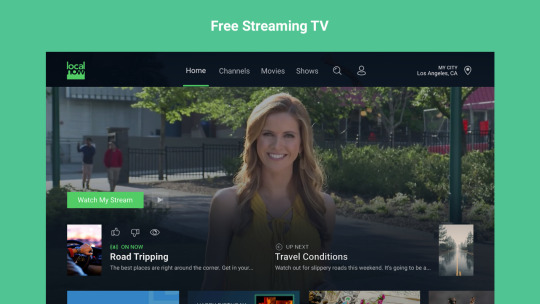
Ofc YouTube being close second. (not yt. premium)
(START WATCHING LONG FORM CONTENT YALL)
Not to also mention: If you have a video game system that still takes discs for content (like the PS4 and Xbox 360/ONE), you can convert them into a DVD streaming platform. If not that, it's already enabled, start collecting/owning some content of your own. Go to the thrift shops. Go to the supermarket and look for the analog option. Shop eBay. Go on Etsy. ANALOG FTW
If you're going for anything news based, consider also going for newspapers -- make going for a newspaper cool again! Even better if it's local or independent!
SHOPPING:
ofc go for reuseable bags. use the coupon deals at the stores. read the coupons that the cashier gives you and see what you can do with them. tax exemptions don't count sadly enough. get a Costco membership and shop in bulk (still, remember the economic options of going for those deals)
side topic: FOOD & COOKING:
opt for making your own cookbooks and write them somewhere that can be looked back on when you get the chance. It's always useful to have something like that on hand. That way you and neither your family forget the recipes that brought you together.
In a sense:
Stick it to the big man and go for the cheaper, less expensive option (and stick to them)
Learn skills on your own terms
Read, Read, Read, Learn, Learn, Learn
Turn off your phone and laptop, keep them in the office (unless your phone IS the alarm) and opt for the Television or a piece of paper.
Connect with gaming in a communal or skill-based sense. Go for card games. Daily newspaper games too. Think northernlion when he does various trivia games online.
Pluto in Aqua may yet have more in store for us, but in current times, this seems to be (to what I think) is best for us.
Rely on your community, rely on yourself. The world is an infinitely chaotic place, but so as long as we have one another, we'll make it through.
#astrology#pluto in aquarius#astro community#resource pack#stick it to the man#fuck the political systems#we need each other#keep it 100#keep it chill
8 notes
·
View notes
Text
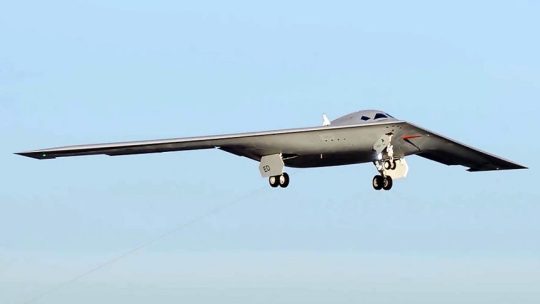
U.S. Air Force Considers ‘Expanded’ Role for B-21 Raider Amid NGAD Review
Parth Satam
B-21 expanded role
As part of the review of its future air superiority concept, the U.S. Air Force is evaluating a larger role for the B-21 Raider. The size of the fleet on order, however, is set to stay at 100 aircraft, at least for the time being and until the ongoing review of the NGAD continues.
Amid a review of the technically complex and astronomically pricey sixth generation NGAD (Next Generation Air Dominance), the U.S. Air Force is considering an expanded role for the B-21 Raider. U.S. Air Force chief General David Allvin’s comments to journalists during the Military Reporters and Editors conference on Oct. 25, 2024, suggested what could be translated as new air dominance and air-to-air missions for the Raider.
As part of the review of its future air superiority concept, the U.S. Air Force is evaluating a larger role for the B-21 Raider. The size of the fleet on order, however, is set to stay at 100 aircraft, at least for the time being and until the ongoing review of the NGAD continues.‘Not ruling out dominance role for B-21 Raider’How will a Raider work in an air-to-air role?Radar-killing rolesMore B-21s?
The Northrop Grumman-developed strategic bomber, meant to replace the B-2 Spirit and the B-1B Lancer, has also been described as the world’s first sixth generation aircraft. The service has announced it would order 100 units of the B-21, with various estimates putting the price tag over $780 million per aircraft. In June, Northrop Grumman and the government negotiated a “not-to-exceed” price for the additional 19 aircraft, which is more than the average unit price of the first five LRIP (Low-Rate Initial Production) lot of 21 aircraft.
The NGAD, considered a replacement for the F-22, is usually described as a “family of systems,” including the crewed aircraft as well as autonomous, unmanned ‘wingmen’ drones for ISR, decoy or strike missions and other disaggregated capabilities. Called CCAs (Collaborative Combat Aircraft), these drones are considered part of the family of systems, and are funded as an integral element of the NGAD program.

However, reports since this summer have revealed a relook towards the NGAD program, whose manned aircraft are estimated to cost $300 million apiece, while also balancing the B-21 Raider and the Sentinel ICBM. The NGAD figure is almost three times that of an F-35, whose price is between $80 and $100 million apiece.
‘Not ruling out dominance role for B-21 Raider’
According to Air Force Times, the Raider “could end up having a larger role in the Air Force’s plans for future air dominance, as the service rethinks its plans for an advanced sixth-generation fighter.” Responding to a question by the publication whether the NGAD’s ongoing review would mean a prominent role for the B-21 in the air dominance role, Gen. Allvin said: “We have not taken that off the table.”
Allvin did not explicitly state either air dominance or air-to-air combat roles. However, given the context of the question, he might have alluded to that possibility. For now, the bomber, which has advanced data linking technologies and features open architecture and digital engineering for rapid upgrades and repairs, would appear to be limited to strategic airborne conventional and nuclear strike roles, with the dominance role subject to the NGAD review.
Interestingly, this is also not the first time that the Air Force has implied a possible air-dominance role for the B-21 Raider. In a Sep. 2019 interview to Air and Space Forces Magazine, then Maj. Gen. Scott Pleus said: “If we were to characterize it as a fighter, we would be thinking too narrowly about what kind of airplane we need in a highly contested environment.”
“A B-21 that also has air-to-air capabilities” and the ability “to work with the family of systems to defend itself, utilizing stealth – maybe that’s where the sixth-generation airplane comes from,” Pleus, at the time the Pacific Air Forces Director of Air and Cyber Operations, told ASF.
Pleus’ comments could also serve to address the ongoing – and still inconclusive – theoretical debate about what constitutes a sixth generation jet. Nevertheless, there is no reason it might not serve to define the capabilities and missions of what is officially described as the world’s first sixth generation aircraft.
B-21 Raider

The B-21 Raider is a high-tech nuclear-capable stealth bomber designed with future modernization in mind to ensure the aircraft and technology are able to evolve throughout time and threat changes. (Photo: Travis Burcham via Airman Magazine)
How will a Raider work in an air-to-air role?
An air-to-air role for the B-21 Raider, if that is what means “expanded” role as per Allvin, could be similar to the arsenal plane concept envisaged for the C-17 Globemaster III, B-52H Stratofortress or the B-1B Lancer bomber. The heavy-carrying planes, generally flying in formation, would simply release volleys of air-launched standoff land-strike cruise missiles to overwhelm air defenses and take out critical land targets. The Rapid Dragon is one such concept envisioned for the U.S. Air Force’s cargo fleet, firing the AGM-158 JASSM (Joint Air-to-Surface Standoff Missile).
In an air-to-air role, the B-21 Raider could carry ultra-long range AAMs (Air-to-Air Missiles) like the secretive AIM-260 JATM (Joint Advanced Tactical Missile), once it is fielded, for engaging large formations of enemy fighters. The goal might not be necessarily to shoot them down, but perhaps to keep them in a self-defensive stance and force them to perform evasive maneuvers, eating away time from core combat tasks.
Radar-killing roles
The ‘expanded’ role might also involve the Raider firing swarms of radar-baiting decoys or other munitions in SEAD/DEAD missions. This hypothesis follows the sparse official descriptions of the B-21 having advanced sensor fusion and data processing and implying an AD (Air Defense) breaching role for standoff strikes. That electromagnetic sensing and computing power could also be extended for radar-killing with own on-board munitions.
A previous report about supporting infrastructure for the B-21 Raider, which involved fuel cell maintenance bays, suggested how the powerful power-generation devices on-board could be used for these very sensors that would require massive amounts of energy.
Moreover, SEAD/DEAD weapons like the AGM-88 HARM (High-Speed Anti-Radiation Missile), AGM-88E AARGM (Advanced Anti-Radiation Guided Missile) or even the MALD (Miniature Air-Launched Decoys) paired with the Raider’s immensely powerful sensors would be a lethal combination for China’s integrated air defense network. Of course, it remains to be seen if these munitions would be carried by the Raider or the CCAs that would be flying alongside it.
In fact, the bomber’s internal racks and launchers would possibly be only for land-strike munitions and would have to be swapped out for AAM or SEAD/DEAD ones. However, it is still unknown what and how much the B-21’s bays can carry, given how both Northrop Grumman and the USAF have been extremely secretive about its technical specifications.
How the USAF repurposes the Raider for a non-core strategic bombing role remains to be seen. Until then, the next few months would show if the service’s ongoing review of the NGAD might or might not have a relationship with the B-21.
B-21 Northrop Grumman new photo

The air-to-air image of the B-21 released by Northrop Grumman. (Image credit: Northrop Grumman)
More B-21s?
While Gen. Allvin did not mention further B-21 acquisitions and Air Force officials said that 100 Raiders are sufficient to the current operational needs, Northrop Grumman CEO Kathy Warden commented that the service might be looking at reconsidering the final number of the bombers. In fact, Air Force Secretary Frank Kendall said that the service is looking at options to increase the force size as part of the force structure design review.
The Secretary has specifically mentioned NGAD, however Warden said the B-21 “is in the mix as well.” “It would be premature for me to suggest where that force structure review will end up,” said Warden. “But I do think in the coming months, we may get a better indication from the Air Force as to how they’re thinking about B-21 quantities in the long run.”
@TheAviationist.com
Should the service decide to increase the number of the new bombers, Warden said Northrop Grumman stands ready to increase B-21 production. The CEO also mentioned she expects the Air Force to award a second LRIP contract by the end of the year.
9 notes
·
View notes
Text
The Social Consequences of Marketing
Marketing, while essential for businesses and economies, has also been criticized for causing harm to society in various ways. Here are some significant ways in which marketing has negatively impacted society:
1. Promotion of Consumerism
Excessive consumption: Marketing often encourages the idea that happiness and success are linked to material goods, promoting a culture of consumerism. This has led to excessive consumption, debt, and environmental damage, as people are driven to buy more than they need.
Planned obsolescence: Companies sometimes design products with limited lifespans, encouraging consumers to buy new versions frequently. This practice contributes to waste, depletion of resources, and increased consumer spending.
2. Exploitation of Insecurities
Body image and self-esteem: Advertising in industries like fashion, beauty, and fitness often exploits people's insecurities by promoting unrealistic beauty standards. This can lead to mental health issues such as low self-esteem, anxiety, body dysmorphia, and even eating disorders.
Fear-based marketing: Some marketing strategies use fear to sell products, such as insurance, security systems, or health products, by making consumers feel unsafe or inadequate without them.
3. Targeting Vulnerable Populations
Children: Marketing often targets children, who are particularly susceptible to persuasive messages. This leads to the commercialization of childhood, with kids exposed to unhealthy food, consumerist values, and a materialistic mindset from an early age.
Low-income groups: Companies sometimes market harmful products, such as payday loans or unhealthy foods, more aggressively to low-income populations, exacerbating financial hardship or health problems.
4. Perpetuation of Stereotypes and Social Divides
Gender roles: Marketing often reinforces gender stereotypes, portraying women as caregivers or men as breadwinners, thereby perpetuating outdated norms that limit gender equality and diversity.
Cultural appropriation and tokenism: Some brands use cultural symbols or minority groups in marketing campaigns without understanding their significance, which can lead to cultural appropriation and tokenism, alienating and misrepresenting marginalized communities.
5. Environmental Damage
Overemphasis on fast fashion and disposable goods: Marketing has contributed to the rise of fast fashion and a throwaway culture, promoting short-term use of cheap, disposable products. This has serious environmental consequences, including pollution, resource depletion, and the generation of vast amounts of waste.
Greenwashing: Some companies falsely market products as "environmentally friendly" or "sustainable" in an attempt to capitalize on consumers' eco-consciousness, misleading the public and delaying genuine action on environmental issues.
6. Manipulation and Misinformation
False advertising: Companies sometimes make exaggerated or false claims about their products, misleading consumers and creating false expectations. This can be particularly harmful when it comes to health products, pharmaceuticals, or weight-loss treatments.
Addictive design: Marketing techniques are increasingly used to promote addictive behaviors, particularly in the context of social media, video games, or gambling. Companies manipulate users through behavioral nudges and psychological triggers that keep them hooked.
7. Invasion of Privacy
Data mining and surveillance: With the rise of digital marketing, companies have gained unprecedented access to consumers’ personal data. Many firms engage in data mining and targeted advertising based on individuals' online behavior, often without full transparency or consent, leading to concerns about privacy and data security.
Personalization and manipulation: Highly personalized marketing can lead to manipulation, as companies can target individuals with ads tailored to their specific vulnerabilities, making it harder for consumers to make objective decisions.
8. Promotion of Unhealthy Lifestyles
Junk food advertising: Aggressive marketing of unhealthy foods, particularly to children, has been linked to rising rates of obesity, diabetes, and other diet-related diseases.
Alcohol and tobacco marketing: Despite restrictions in some countries, marketing of alcohol, tobacco, and vaping products continues to glamorize these potentially harmful substances, leading to addiction and public health crises.
9. Contributing to Financial Instability
Credit and debt marketing: Marketing of credit cards, loans, and other financial products often promotes spending beyond one's means, contributing to personal debt and financial instability. Predatory lending practices, such as payday loans, are frequently marketed to those already in financial difficulty.
10. Reduction of Authenticity and Creativity
Commercialization of art and culture: Marketing can sometimes reduce art, culture, and creativity to mere products to be sold, stripping them of their authenticity. This can lead to the commodification of creative expression and a focus on profit over substance.
Trend exploitation: By constantly pushing new trends, marketing fosters a culture of superficiality and short-term thinking, where value is placed on what is fashionable or trending rather than what is meaningful or lasting.
While marketing plays a critical role in the economy by connecting consumers with products, it also has significant social, psychological, and environmental consequences. From promoting overconsumption and exploiting insecurities to targeting vulnerable groups and contributing to environmental degradation, marketing practices have often prioritized profit over societal well-being. Reforming marketing to be more ethical and socially responsible is essential for creating a healthier, more sustainable society.
#philosophy#epistemology#knowledge#learning#education#chatgpt#ethics#economics#society#politics#Consumerism and Materialism#False Advertising#Gender Stereotypes in Media#Data Privacy and Surveillance#Environmental Impact of Marketing#Exploitation of Insecurities#Ethical Marketing Practices#Targeting Vulnerable Populations#consumerism#marketing#advertising#capitalism
9 notes
·
View notes
Text
Mass Effect Lore: Common technologies in the 2180‘s (Part 2)
This post is both a collection of canon technologies in the Mass Effect universe, and personal headcanon which may be borrowing common concepts from sci fi.
Infrastructure:
Autonomous public transportation vessels of all sorts. As seen with the tram on Noveria. Trains, buses and cabs are also autonomous. Rude bus drivers, trains and buses being cancelled or too late are problems of the past.
Some of those buses and cabs drive on land; others are flying vessels that travel through the sky.
Trains travel at immense speed, with most trains being able to travel at least 1000km/h. Low pressure tunnels allow for this level of speed.
Suspension railways are a common means of public transportation and are widely featured all across the galaxy on various space station, colonies and in most Earth countries. This also includes maglevs (magnetic levitation trains).
Cities commonly not only feature terminals providing rentable e-bikes, e-scooters or even e-rollerblade, but also rent flying hoverboards.
Medicine & Health:
Needles have become obsolete. Technologies akin to Star Trek's hypospray have replaced them. (This contradicts with Mordin's line in ME3: „Fear of needles. Common phobia." I know.)
Genetic therapy has advanced so far as to being able to cure almost any genetic disease. (Book canon).
Cybernetics can fix deafness and blindness.
(Canon implied, I believe?)
Advancement in technology and medicine have slowed down human aging significantly. Women can have healthy children in their sixties. (Book canon). Anti aging therapies and cybernetics can allow humans to reach ages of up to 250 years.
Education:
Paper and pens being used in schools is a thing of the past. Students use tablets (which are made of ultra-light also foldable) with either keyboards or tablet pens for handwritten notes.
(Book canon implied - Gillian uses a computer to work on her assignments in Mass Effect:
Ascension).
Some teachers and students would prefer to have their textbooks in form of super light datapads (like e books) rather than have them all digitally stored on their computer.
Learning programs are highly advanced and VI‘s provide students with custom tailored, individualized exercises and study plans and games.
Food:
Liquid food drinks, nutrient pastes and bars that replace entire meals are available just about everywhere. With biotics burning huge amount of calories, the asari have perfected such products. Being cheaper than freshly cooked take out meals and coming in all sorts of flavors and textures, such nutrient pastes proved to be a saving grace for poorer individuals. Some poor people nearly only eat 3D printed nutrient paste, which does not have the same feeling as eating real meals, but nutrient paste in Mass Effect is of such high quality that it provides the body with all nutrients it needs while being free of unhealthy ingredients.
People-prepared foods (by humans/aliens) are still appreciated, but many foods available in grocery stores are 3D printed. Cafés tend to feature feature people-prepared foods. A café selling 3D printed cakes for instance would be looked down upon.
Synthetic flavors have been perfected. While technology has been advanced to the point where you could grow strawberries on Omega without issues (using environmental control systems in a hydroponic bay), the ultimate cheapest way to replicate the flavor is using synthetic ingredients. This way, you can find foods of any flavor, no matter what exotic fruit from Palaven or Khar'Shan it might be, anywhere.
Sugar free snacks and candy are as common as the sugar variants. Ice cream cates feature sugar free ice cream options. Sugar free chocolate or cookies are available at any grocery store.
Various synthetic ingredients are used to replace sugar.
Lab grown meat is incredibly common (canon) and meat from Earth animals found on space stations is grown from animal stem cells.
Home:
Significantly less time is spent on chores due to robots doing most of the work. With floor wiping and vacuum robots being affordable for middle class people in the 21st century, in the 22nd, the majority of cleaning is done by robots in a middle class household. Advanced kitchen aid machines are found in most households and make cooking less time consuming and complicated for most people.
Blinds, curtains, light, air filtration systems, thermal regulation systems (air conditioning or heating systems) and television are typically navigated via a voice command (for example, „Light on“ or „Television off).
Holographic home ambiences like in Cyberpunk 2077 are common. Windows can be made to look like they‘re displaying a galaxy full of stars via holographic projections. Some people use those home ambience holographs to create the appearance of a luxurious club lounge, or to project beautiful landscapes into a corner of their room.
Personal Care:
Like in Star Trek, sonic showers can be used to clean the body effectively. Ultrasonic vibrations remove dirt, bacteria, excess oil and dead skin cells without requiring soap or water. While more expensive than typical showers, the use of sonic showers saves water. This sort of technology is found within quarian environmental suits. Drell with Kepral's Syndrome generally use sonic showers rather than water showers.
In addition to having an inbuild shower function, quarian environmental suits are equipped with a dental hygiene program that cleans the teeth and mouth of the wearer effectively using ultrasonic vibrations.
Certain suit upgrades can even use nanobots to moisturize the body.
Toothbrushes are also generally sonic toothbrushes that use the same technology as showers do; ultrasonic vibrations.
Clothes are typically self-cleaning with nanoparticles that kill bacteria and prevent the build up of odor.
41 notes
·
View notes
Text
How To Write Short Stories Using Notion (Short Guide)
Are you a writer who struggles to keep track of your ideas and progress? Well, the perfect application is at your fingertips. Notion, the all-in-one productivity tool that can streamline your writing process. In this guide, I’ll teach you how to use Notion to write short stories, from organizing your ideas to exporting the final product.
First, if you’re new to Notion, it’s helpful to understand the basics. Notion is a digital workspace that allows you to create and organize various types of content, from notes to databases to project boards. It’s highly customizable and can be tailored to fit any workflow. Plus, it’s free to use with some limitations, but upgrading to a paid plan unlocks additional features. Now that you have a brief overview of Notion, let’s dive into how to use it for writing short stories.
Organizing Your Ideas Before you start writing, it’s essential to have a clear idea of what you want to write about. Notion’s notes and database features make it easy to organize your thoughts and research in one place. Start by creating a new page in your Notion workspace for your short story. From there, you can create subpages for each aspect of your story, such as characters, plot, setting, and themes. Within each subpage, you can add notes, images, and links to external sources for reference. To take it a step further, you can also use Notion’s database feature to create a table for your story’s world-building elements, such as locations, factions, and magic systems. This makes it easy to keep track of details and ensure consistency throughout your story.
Creating a Storyboard
A storyboard is a visual representation of your story, typically used in film and animation. However, it can also be useful for writers to map out the structure of their story and ensure it flows logically.
To create a storyboard in Notion, you can use the gallery view of a database. Create a new database with fields for each scene in your story, including a brief summary and any relevant notes or images. Then, switch to gallery view, and you’ll have a visual representation of your story’s structure. You can also use Notion’s kanban board view to track the progress of each scene and move them from “to-do” to “in progress” to “done” as you write.
Outlining Your Plot
Once you have your ideas organized and your storyboard created, it’s time to outline your plot. A plot outline is a roadmap for your story, detailing the major events and turning points. In Notion, you can create a new database with fields for each plot point, including a brief summary and any relevant notes or images. Then, use the board view to arrange the plot points in chronological order and ensure they flow logically. You can also use the timeline view to visualize the pacing of your story.
Don’t worry if your outline changes as you write – Notion makes it easy to rearrange and edit your plot points as needed.
Developing Your Characters
Your characters are the heart of your story, so it’s essential to develop them fully. Notion’s database feature makes it easy to keep track of your characters’ traits, motivations, and backstory.
Create a new database with fields for each character, including their name, age, appearance, personality, and backstory. You can also add fields for their relationships with other characters and any relevant notes or images. As you write your story, refer back to your character database to ensure consistency and avoid any contradictions.
Tracking Your Progress and Goals
Writing a short story can be truly daunting at times, but Notion can help you stay on track and motivated. Use the built-in to-do list feature to set daily or weekly writing goals, and track your progress as you go.
You can also use Notion’s calendar feature to schedule writing sessions and deadlines, and the reminder feature to ensure you don’t forget anything important. Remember, writing is a marathon, not a sprint, so celebrate your progress along the way!
Adding Research and Inspiration
Every story requires research and inspiration, whether it’s for historical accuracy or world-building details. Notion’s web clipper extension makes it easy to save articles, images, and other online content for later reference.
Simply install the web clipper extension in your browser and click the icon when you come across something you want to save. Notion will automatically create a new note with the content and link back to the original source.
You can also use Notion’s built-in image gallery feature to create a visual mood board for your story’s setting or characters.
Collaborating with Others
If you’re working with a co-author or editor, Notion’s workspace sharing feature makes it easy to collaborate in real-time. Simply invite the person to your workspace, and you can both access and edit the same pages and databases.
Notion’s commenting feature also allows for easy communication and feedback. You can leave comments on specific notes or database entries, and the other person will receive a notification.
Exporting and Formatting Your Story
Once you’ve finished writing your short story, it’s time to export and format it for sharing or publishing. Notion makes this process easy with its export feature.
To export your story, simply select the pages or databases you want to include and choose the export format, such as PDF or Markdown. Notion will then compile the content into a single file for easy sharing.
If you need to format your story for submission to a publisher or literary magazine, you can use a tool like Grammarly or Hemingway to ensure it’s polished and professional.
Conclusion
Notion is a powerful tool for writers, offering a versatile and customizable workspace for organizing and tracking your writing process. By using Notion for writing short stories, you can streamline your workflow, stay motivated, and create polished and professional stories. Happy writing! -Ren
TheWriteAdviceForWriters 2023
#writeblr#writers block#writing tips#character development#creative writing#witchcore#on writing#female writers#fiction#fic writing#writing#thewriteadviceforwriters#writing advice#fantasy fiction#novel writing#author#writers and poets#the writing process
140 notes
·
View notes
Text
1990s Electro Playlist
Electro is that cold, mechanical, futuristically dystopian, raw, sci-fi urban dance music that originated in the early 80s in New York with dudes like Afrika Bambaataa and then in Detroit with dudes like Juan Atkins. Both movements were more or less influenced by the same crop of acts: Kraftwerk, Yellow Magic Orchestra, Gary Numan, etc., but while electro would mesh with rap in New York and then soon get subsumed by Rick Rubin’s brand of guitar-infused production to give us Run-D.M.C., Juan Atkins and his ilk would take the Detroit brand of the stuff and develop techno music out of it.
But with the advent of that Rick Rubin style of rap, the overall popularity of electro music proceeded to take a nosedive, and it wasn’t until the late 90s that it would sustain its first serious wave of revivalism.
However, those early to mid-90s still had some great electro tracks too, even if there were hardly any public places to actually play the records themselves. Acts like Drexciya and Aux 88, both from the Motor City, provided a lifeline for this highly specific brand of perpetually 80s-sounding dance music by keeping it uptempo and maintaining an explicit Detroit techno feel, despite not really deploying the typical four-on-the-floor beat that’s so germane to techno in the first place.
So, this playlist, little by little, is going to try to accumulate some of that dope electro that these 90s had to offer, from that nearly dead period to the second wave.
Two personal favorites of mine here, at least on the Spotify version of this playlist, are "Sci-Fi Memento" by a Danish group called Kraftwelt, who derive much of their own inspiration from Kraftwerk themselves, and the all-time electro classic of "Space Invaders are Smoking Grass," by a guy from the Netherlands who calls himself I-f. Sitting at over 11.7K plays, "Sci-Fi Memento" is a string synth-laden joint from '96 with a refreshing amount of crispness and clarity that is not all that typical of the electro sound; but "Space Invaders are Smoking Grass," on the other hand, which somehow only came out the following year, and is at over 1.873 million plays(!), brings that lovely and familiar fuzzy-dusty electro sound, with its low and stabby distorted bassline, its robot voicing, and a difficult-to-describe metallic-shiny-popping melody that really puts the whole thing over the edge.
This playlist is ordered as chronologically as possible:
Drexciya - "Bubble Metropolis" Feedback - "Seasons" Alien FM - "The Future" Like A Tim - "Housegirl - Homeboy" Kraftwelt - "Sci-Fi Memento" Da Sampla - "Digital System" Will Web - "Boomin'" Like A Tim - "From Scratch" I-f - "Space Invaders are Smoking Grass" Dopplereffekt - "Sterilization" KT-19941 - "Face Your Fate"
But truth be told, if you want the real fuckin' 90s electro stash, you'd be much better off checking out the YouTube version of this playlist instead, because in addition to all of those tunes listed above, it also has a bunch of stuff that can't be found on Spotify too, like a dope track from 1991 by legendary UK IDM duo Autechre, who were operating as Lego Feet when they put out the hissy "Keyop" (13.8K+ plays), a song that utilizes that same type of synth sound that would make that guy Tobacco from Black Moth Super Rainbow indie-famous in the late 2000s and 2010s (the theme song to Silicon Valley actually came from one of his tunes).
And we've also got the Detroit ghettotech legend himself, DJ Assault, with a back-to-back pair of made-for-dancefloor slappers in "Shake It Baby" (196.8K+ plays) and "U Can't See Me" (4K+ plays with the specific version I put on here); a terrific 12-and-a-half-minute megamix by techno DJ legend and electro connoisseur Dave Clarke that packs in a lot of classic 80s electro-hip hop with some more contemporary stuff (3.8K+ plays); and then a pair of tunes that I discovered on a 1999 compilation called Electro Kingdom: Episode One to close things out: Thomas Krome's "Electro Bitch," which sounds like descending down an escalator straight into hell (400+ plays), and "Skewer (You're So Human)," by Nudge aka Freeform, which sees who I think is one of the most underrated IDM artists of all time blending his genre of expertise with electro (100+ plays).
Lego Feet - "Keyop" Aux 88 - "Technology" Storm - "Timeline" Aux 88 - "Direct Drive" Transits of Tone - "Warfare Beats" Aux 88 - "I Need to Freak" Posatronix - "Step Into My Groove" DJ Assault - "Shake It Baby" DJ Assault - "U Can't See Me" Anthony Rother - "Describe Reality" Aux 88 - "Electro/Techno (Microknox Remix)" Oliver Dodd - "Janitorial Bandsaw" Dave Clarke - "Oldskool Cut Up" Thomas Krome - "Electro Bitch" Nudge - "Skewer (You're So Human)"
And this playlist is also on YouTube Music.
So with the Spotify version of this playlist, we start with 11 songs that clock in at over 57 minutes, but over on YouTube, we've got 25 songs that clock in at 135 minutes. So if you want a whole lot more of that electro fire, give the YouTube one a listen.
Next week, some London tracks!
Enjoy!
More to come, eventually. Stay tuned!
Like what you hear? Follow me on Spotify and YouTube for more cool playlists and uploads!
#electro#dance#dance music#electronic#electronic music#music#90s#90s music#90's#90's music#playlist#playlists#spotify playlist#spotify playlists#youtube playlist#youtube playlists#youtube music playlist#youtube music playlists#Spotify
3 notes
·
View notes
Text
What is DeepSeek OpenAI? A Simple Guide to Understanding This Powerful Tool

Technology is constantly evolving, and one of the most exciting advancements is artificial intelligence (AI). You’ve probably heard of AI tools like ChatGPT, Google’s Bard, or Microsoft’s Copilot. But have you heard of DeepSeek OpenAI? If not, don’t worry! In this blog, we’ll break down what DeepSeek OpenAI is, how it works, and why it’s such a big deal in the world of digital marketing and beyond. Let’s dive in!
What is DeepSeek OpenAI?
The advanced AI platform DeepSeek OpenAI provides businesses and marketers together with individual’s tools to automate operations while enabling better decision-making and improved content generation efficiency. The platform functions as a highly intelligent assistant which analyzes data while generating ideas and creating content and forecasting trends within seconds.
The system's name "DeepSeek" was inspired by its deep information exploration capabilities to generate significant insights. DeepSeek operates through OpenAI's robust technology platform that also powers tools such as ChatGPT. DeepSeek delivers optimized performance for particular circumstances within digital marketing analytics and customer relationship management applications.
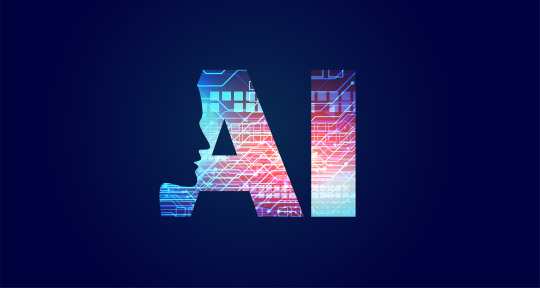
Why is DeepSeek OpenAI Important for Digital Marketing?
Digital marketing is all about connecting with your audience in the right way, at the right time. But with so much competition online, it can be challenging to stand out. That’s where DeepSeek OpenAI comes in. Here are some ways it can transform your marketing efforts:
1. Content Creation Made Easy
Your audience engagement depends heavily on producing high-quality content although this process demands significant time investment. Through DeepSeek OpenAI users can instantly create blog posts together with social media captions and email newsletters and ad copy. You gain professional writing support from a team member at no additional expense.
2. Data Analysis and Insights
Marketing is all about data. DeepSeek analyzes website traffic combined with social media performance and customer behavior to generate valuable insights. With its analytics capabilities the system shows you which items customers prefer the most and which promotional strategies generate the highest customer purchases.
3. Personalization at Scale
The demand for personalized customer experiences exists though implementing such solutions manually proves difficult. DeepSeek enables you to produce customized email marketing initiatives together with tailored product recommendation systems and conversational bots that deliver unique messages to every user.
4. Predictive Analytics
DeepSeek's predictive analytics system enables companies to anticipate their business future through forecasting customer behavior and sales performance and industry trends. DeepSeek uses predictive analytics to forecast trends alongside customer behavior and sales performance. The predictive capabilities of DeepSeek enable your business to anticipate market trends thus enabling proactive decision-making.
5. Automation of Repetitive Tasks
DeepSeek helps automate time-consuming repetitive tasks that include social media scheduling and customer inquiry response. DeepSeek automation allows you to allocate your time toward strategic planning and creative thinking.
Real-Life Examples of DeepSeek OpenAI in Action
Let’s look at some real-world scenarios where DeepSeek OpenAI can make a difference:
E-commerce Store: DeepSeek enables online stores to examine customer reviews which reveals frequent customer grievances. Their analysis helps them enhance their products while developing specific marketing initiatives.
Social Media Manager: Social media managers use DeepSeek to create compelling captions and hashtags for their social media posts while the platform helps them determine successful content types. The tool helps users understand which types of content deliver the best results so they can modify their approach.
Small Business Owner: The website blog posts written through DeepSeek help the small business owner save significant amounts of time. Through this platform they generate customized email marketing initiatives which enhance customer retention.
Marketing Agency: DeepSeek enables marketing agencies to generate thorough reports by analyzing data from numerous clients through its system. The agency uses the data analysis to produce superior outcomes which enable them to excel in their competitive field.
Challenges and Limitations
While DeepSeek OpenAI is incredibly powerful, it’s not perfect. Here are a few challenges to keep in mind:
Dependence on Data: The quality of DeepSeek’s output depends on the quality of the data you provide. Garbage in, garbage out!
Lack of Human Touch: DeepSeek's content creation capability exists alongside its inability to replicate human emotional touchpoints in writing.
Learning Curve: Using any new tool requires users to overcome an initial learning process. Learning to utilize DeepSeek efficiently requires a period of complete understanding.
Cost: DeepSeek advanced AI tools present high costs for users with specific requirements.

How to Get Started with DeepSeek OpenAI
Ready to give DeepSeek OpenAI a try? Here’s how to get started:
Sign Up: Create an account at the DeepSeek website to begin. Platforms typically allow new users to experience free trial or demonstration features as a basis for learning their tools.
Define Your Goals: What objectives do you want to accomplish through DeepSeek? Clear objectives about content creation data analysis and customer engagement will help you maximize your use of the tool.
Explore Features: Spend a few moments to investigate all features and capabilities of DeepSeek. Perform multiple tasks to determine which ones provide your optimal results.
Integrate with Your Workflow: DeepSeek enables integration with multiple tools including CRM systems and email marketing platforms and social media scheduling tools.
Monitor and Adjust: When using DeepSeek monitor the results to enable necessary adjustments. The more time you spend using its capabilities the better you will become at accessing its full potential.
The Future of DeepSeek OpenAI
DeepSeek OpenAI holds an exciting path into the future. AI technology's future development will bring us progressively enhanced capabilities and features. Future versions of DeepSeek OpenAI could develop capabilities to generate video content while designing graphics and autonomously managing complete marketing campaigns.
Final Thoughts
DeepSeek OpenAI functions as more than a tool because it represents a transformative solution for digital marketing alongside other fields. The system allows businesses to achieve better results through automated processes while creating valuable insights and expanded creative possibilities. DeepSeek serves marketers at every experience level to help them reach their objectives at accelerated speeds while boosting operational efficiency. Visit Eloiacs to find more about AI Solutions.
3 notes
·
View notes
Text
most of the dominant digitally enmeshed forms of social experience dubiously staking themselves at the precipice of cultural advancement and expansion of opportunity for life fulfillment are becoming dredged in a curation that ought to be expansive. this is present even in the reactive spur desired of one's own writing, to the point of expressive implosion and isolation to optical tracking. spectacular sociopathy reclaimed from the ultimate substance of the corporate entity, nystagmatic contact that blurs the bounties of an individuated understanding when the image, completed as a unit of reference by its presentation, is not developed by its associative recollection and elastic longevity in other minds, whose susceptibility to directive intervention is already limited at the outset. does the leveling of access correlate to a leveling of expressive difference? is it acceptable for the valorization of its unified integrity to trump any other wholesome service, or is that just taken as an externality, outside the scope of one's interest in controlling it? still, the magic of the image is its nonverbal language, how its reception bends any logos that might have originally organized it, how the word is reduced to an indecipherable lineage before a more immediate and less abstractly integral schematic. autonomously organized center voices seize down their carriage of words in an oikonomic ransacking of the mind whose responsiveness to the mysterious somatoform feedback of specific signs is scattered in the scroll as many artists struggle to surface themselves from the precarity of gig labor if they do not succumb to a total sidelining of their practices. public organizations and cultural initiatives meld with businesses at the level of competition for attention by algorithmic reuptake, so susceptible to the invasive oversight that rots its creative and socially bridging capacities into an ornery corniness, a flat rate of affect. the highly visible strain of life under a slowly crumbling system of its productive organization, the destabilization lurching before a unipolar slanting of global power that was always set to fail by its immoral premises felt thoroughly through every interstice of its experience even as it seeks to desensitize us, will urge us to generate other conditions and realms of sociality, as it always goes.
#text#economy of negative difference#i want to purge myself of visual gluttony and its brood of fantasy which steals my time to irrevocable air
12 notes
·
View notes
Text
Exploring the Defiance of Death Grips in the Music Industry
Hello everyone! Today, I’d like to share to you guys about my project of research.
The topic of the music industry has always fascinated me. The way artists balance creative freedom with the constraints of commercial success is something I often find myself thinking about. What draws me most to this subject is how some artists choose to challenge and even defy the very system that helped them rise to fame. For me, this act of rebellion is not just an act of resistance but a beautiful demonstration of artistic integrity and freedom.
That’s why I chose to focus my research project on Death Grips, which is an experimental group that has pushed the boundaries of what is expected in the music industry. I’ve been nonstop writing about them here! Their refusal to conform to traditional industry norms is not only striking but also highly compelling. My project explores the following question: “How does Death Grips’ deliberate resistance to conventional music industry norms redefine the relationship between artist and institution, and to what extent does their approach align with Keith Negus’ theories on the music industry’s role in shaping and mediating artistic production?” This question will allow me to analyze Death Grips’ methods of subverting industry expectations, especially in terms of their DIY ethos, innovative use of digital platforms, and resistance to commercial pressures!
Keith Negus’ work on the music industry, particularly his exploration of how artists are both shaped by and resist industry structures, has heavily influenced this project. His theory about the “mediation” of artists — how the music industry not only shapes their production but also their public persona and creative output — provides the perfect lens through which to examine Death Grips. Their refusal to follow conventional promotional strategies and their prioritization of artistic freedom over mainstream success highlights the complexity of the artist-industry relationship in the modern age.
As I dive deeper into the project, I will explore their controversial stances on digital mediation, their rebellious image, and how their subversion has influenced both the music industry and other artists.
Here’s the bibliography I’m going to use for this project!:
As primary sources:
Death Grips Albums: Exmilitary (2011) – album,
Death Grips, The Money Store (2012) – album,
Death Grips, No Love Deep Web (2012) – album,
Death Grips, Jenny Death/The Powers that B (2015) – album,
Death Grips’ Music Videos: “No Love” (2012) – music video,
Death Grips “Centuries of Damn” (2015) – music video,
Death Grips Interviews: “Death Grips Talk About Their ‘No Love Deep Web’ Album, Their Rejection of the Music Industry, and the Evolution of Their Sound” – Interview with Death Grips (Rolling Stone, 2012)
As secondary sources:
Books: Negus, Keith. Studying Popular Music: Theory and Method. Routledge, 1996.
Articles: Death Grips: The Anti-Music Industry Band – Article, Pitchfork (2013)
Social Media Posts: Death Grips’ Instagram Account: @deathgrips
News Articles: Death Grips and the Politics of Rejection: How the Group is Destroying the Music Industry’s Norms – Article, NME (2014)
Fan Forums and Groups: Death Grips Subreddit: r/DeathGrips
Social Media Posts (JPEGMAFIA and Run the Jewels): JPEGMAFIA Twitter: @jpegmafia
Run the Jewels Twitter: @runjewels
Videos and Documentaries: Death Grips: Music for the Masses (2016) – Documentary
Hopefully you guys will be interested! :)
Wish you the best in your researches guys!
6 notes
·
View notes
Text
Enhancing Customer Engagement Through Artificial Intelligence

In the rapidly evolving digital landscape, businesses are constantly seeking innovative ways to improve customer engagement. Artificial Intelligence (AI) stands at the forefront of this revolution, offering transformative solutions that enhance how companies interact with their customers. Leveraging the power of advanced technology, AI is reshaping the customer experience in numerous ways.
The Role of Artificial Intelligence in Customer Engagement
Artificial Intelligence is revolutionizing customer engagement by enabling businesses to provide personalized experiences at scale. AI algorithms can analyze vast amounts of data to understand customer preferences and behaviors, allowing companies to tailor their interactions and offerings to meet individual needs. This level of personalization fosters deeper connections and loyalty.
1. Personalized Marketing: AI-driven marketing platforms can create highly personalized campaigns by analyzing customer data. These platforms can predict what products or services a customer might be interested in, delivering targeted content that resonates with them. Personalized marketing not only increases engagement but also boosts conversion rates.
2. Chatbots and Virtual Assistants: AI-powered chatbots and virtual assistants are transforming customer service by providing instant, 24/7 support. These tools can handle a wide range of queries, from answering frequently asked questions to guiding customers through complex processes. The use of AI in customer service reduces wait times and enhances satisfaction.
3. Predictive Analytics: Predictive analytics, powered by AI, allows businesses to anticipate customer needs and preferences. By analyzing historical data, AI can identify patterns and trends, enabling companies to proactively address issues and offer relevant solutions. This proactive approach significantly improves the customer experience.
The Technology Behind AI in Customer Engagement
The success of AI in enhancing customer engagement is largely due to advancements in technology. Here are some key technological components driving this transformation:
1. Machine Learning: Machine learning algorithms enable AI systems to learn from data and improve over time. By continuously analyzing customer interactions and feedback, these algorithms refine their models to deliver more accurate and personalized experiences.
2. Natural Language Processing (NLP): NLP allows AI systems to understand and respond to human language in a natural way. This technology is crucial for chatbots and virtual assistants, enabling them to comprehend customer queries and provide relevant responses.
3. Data Analytics: Advanced data analytics tools are essential for extracting actionable insights from vast datasets. AI leverages these tools to analyze customer data, uncover patterns, and make informed decisions that enhance engagement.
Challenges and Future Outlook
While the benefits of AI in customer engagement are significant, there are also challenges to consider. Ensuring data privacy and security is paramount, as AI systems handle sensitive customer information. Additionally, there is a need for transparency in AI decision-making processes to build trust with customers.
Looking ahead, the future of AI in customer engagement is promising. Continued advancements in AI and technology will further enhance the ability of businesses to deliver personalized, efficient, and satisfying customer experiences. As AI continues to evolve, its role in customer engagement will only grow, making it an indispensable tool for businesses striving to stay ahead in the digital age.
3 notes
·
View notes
Text



Did you know that a Russian left communist Russia with a MIG 25? He left because he wanted to see the United States when he got here he was shocked at what he found. It wasn’t like what the communist propaganda had told him.
Lt Viktor Belenko with very low fuel landed his Mig-25 at Hakodate Airport in northern Japan, running off the end of the short runway. His defection to the West gave the United States the opportunity to closely examine the Mig-25. The aircraft was completely dismantled and then carefully inspected by aviation scientists and engineers from both Japan and the United States. President Ford granted Belenko asylum in the United States and the pilot underwent five months of questioning and interrogation. The United States Government established a Trust Fund for him and the interest alone afforded Belenko very comfortable living in the U.S. He was a free man, at last, to do as he pleased.
Upon dismantling the Mig-25, the data was analyzed by the Foreign Technology Division of the Air Force at Dayton, Ohio. There were many surprises:
The Mig had been manufactured in February 1976 and thus was one of their latest most sophisticated production aircraft.
Transistor circuitry was not used but instead the Soviets relied on vacuum tubes for most of their electronics. The Soviets reasoned the vacuum tubes were less affected by EMP waves in the case of nuclear attack; were more resistant to temperature extremes and they were easy to replace in remote airfields where transistors may not be readily available if repairs were needed.
Pilot forward vision was highly obstructed.
With huge Tumansky R-15D-300 engines the Mig was considered almost a rocket.
Pilots were forbidden to exceed Mach 2.5.
There was a total of three engine instruments and the airspeed indicator was redlined at 2.8 Mach.
Above Mach 2.8 the engines would overheat and burn up. The Americans had clocked a Mig-25 over Israel at Mach 3.2 in 1973.
The combat radius is 186 miles.
Without using afterburner; staying at optimum altitude and not maneuvering, the Mig can fly in a straight line for 744 miles.
The plane was so heavy at 64,200 pounds, that according to early rumors Soviet designers had to eliminate a pilot ejection system. However this was disproved. Most MiG-25s used the KM-1 ejector seat. The last versions used an early variant of the famous K-36 seat. The speed record for the fastest successful ejection (Mach 2.67) is held by a KM-1 equipped MiG-25.
Maximum altitude of missiles: 88,588 feet.
Maximum G load: With full fuel tanks 2.2 G's is max; with near empty fuel tanks, 5 G's is dangerous. The Mig-25 cannot turn inside a U.S. F-4 Phantom fighter!
Belenko states the Mig-25 cannot intercept the SR-71 for several reasons: The SR-71 fly too high and too fast; the Mig cannot reach it or catch it. The missiles lack the velocity to overtake the SR-71 and in the event of a head on missile fire (The Golden BB), the Guidance system cannot adjust to the high closure rate of the SR-71.
The Mig-25 has a jam proof radar but cannot distinguish targets below 1,640 feet due to ground clutter. The radar was so powerful it could burn through jamming signals by approaching bombers.
The pilot duties were to take off, turn on the auto pilot and await instructions to fire the missiles from ground controllers. The Mig-25 had a superb auto pilot and digital communications from an onboard computer to ground controllers. Credit is given to the Soviets for building a high altitude Interceptor in a short period of time with the materials and engines available to them in 1967 in order to counter the perceived threat of the XB-70.
On November 12, 1976, sixty-seven days after the defection of Belenko and his Mig-25 to the West, the United States and Japan returned the Mig-25 to Russia...in dismantled pieces. I strongly recommend reading his MiG Pilot I bought my copy on Amazon, but they were running low on copies even though the book is 30 years old.
Linda Sheffield
@Habubrats71 via X
17 notes
·
View notes
Text
Manually Decoding DTMF Through A Spectrogram
While working on a recent CTF, I came across a challenge that required participants to extract a credit card number from a recording of a touch-tone telephone. If you pull your phone out now, turn on your ringer (because it’s almost definitely off), and click on some random numbers on the phone app keypad, you’ll hear the product of what’s known as DTMF, which stands for dual-tone multi-frequency.
I won’t go into the specifics of DTMF and why it exists — the important thing to know is DTMF uses a combination of two distinct tones to create one sound. There is a low tone and a high tone. Today, I’ll be showing you how to decode DTMF by sight through a spectrogram. There are decoders available for free online, so if you come across a problem like this in a CTF, or otherwise, I highly recommend using one of those, purely for speed and convenience. All that being said, this is an interesting process, and just generally a cool thing to know about. It’s the equivalent of converting binary to hexadecimal by hand instead of using an online converter — basically useless — but a great party trick (in the event of attending one, which I highly doubt given you’re reading this — so yeah, basically useless… on that note (or should I say tone (my musically inclined friend has informed me that I should not)), on with the article!)
Note — Standard DTMF — two tones, four levels per tone.
As of iOS 15.7, this tutorial is still relevant. I am looking for more samples (other phone brands and software models) to determine how accurate this is cross-platform. If you’re interested in contributing, there will be some information at the end explaining how.
I’ll be using this audio file - https://voca.ro/1dr1J1gbyw5B
(This is from the CyberSoc Wales “personalbanker” challenge)
The first thing I did was put the recording through a spectrogram program. There are plenty available for free online; personally, I like using Academo, because it includes lines that will help with quick sight-reading later on. (https://academo.org/articles/spectrogram/).
You may be better off downloading software (Audacity is fantastic), should you require a spectrogram for a longer recording. Academo is not scalable beyond 10 seconds, so you can use it, but you’re going to be taking quite a few screenshots.
The first thing I did was drop the recording from the challenge into Academo.

A spectrogram is a visual representation of the frequency content of an audio signal as it changes over time. In the image above, I’ve isolated the beeps produced by the clicking of the phone keypad. This section of the recording is longer than 10 seconds, so I also spliced together two screenshots. Any discrepancies you may notice in the image above are a product of that.
Each vertical line of dots represents one beep, and thus, one number. You’ll notice that there are two horizontal rows per beep, this is the magic of DTMF. There are 8 total frequencies involved in the DTMF system. The original DTMF keypad was laid out in a 4x4 format (below). The letter keys (A, B, C, and D) are no longer used for personal telecommunication. For digital decoding purposes, you will almost certainly not come across the letter keys, although they are still used by amateur radio operators, payphones, and the occasional equipment control system.

I was starting from scratch, with no knowledge of how a spectrogram worked with DTMF, so the first thing I did was create two recordings of myself clicking each number in my phone app (I am using iOS 15.7 on my iPhone XR).


What you’ll begin to notice is that each number has its own combination of low and high tones. If you want to try to figure out the system on your own, now is the time.
Each variation in height represents a tone at a specific Hz. In order to decode this manually, you do not need to know the specific Hz of each number, you just need to understand the relational position of each tone, informed by its Hz.
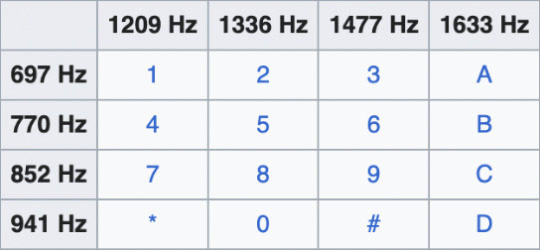
I ended up throwing the original audio into Audacity so that I could create my own lines on the spectrogram for demonstration purposes.
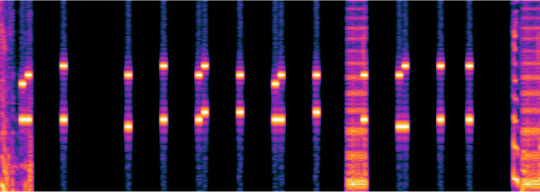
First, I’m going to turn down the contrast to make it a little easier to see.

Now, I’m going to add some lines to match up the similar tones.

At this point, we have 6 layers of lines, there are no 0s present in this recording, if there were, we would have another line just above the bottom three. The use of the original DTMF structure with the ABCD keys would give us another line above the top three.
The simplest way to proceed is to categorize each set into Low, Medium, and High. You could choose any system — 1, 2, 3; a, b, c; whatever works for you. I recommend the LMH system because it’s visual and easy to keep track of.
I filled out the table below to show each numerical combination.

Two letters per number, each representing Low, Medium, or High (ultra High in the case of 0).
The first letter represents the top layer, and the second letter represents the bottom.
The corresponding Hz are listed in the third row for your reference.
I’ll walk you through the decoding process for the first two and then you can try the third.

We’re going to look at the first column of tones (boxed in yellow).
This represents one number.
The first tone is crossed by the lowest of the top lines, it is marked L.
The second tone is crossed by the medium bottom line, it is marked M.
Together, they are LM — which, upon referencing the chart, is 4.
The second one is MM, which is 5.
Now try the third. (full answer at the end, scroll up now if you’d like to try it on your own — try it with lines or without!)
Once you get a feel for this, the process becomes much faster. The lines are purely for demonstrative purposes, with a little practice you’ll be able to quickly do this without lines.
And that’s how to decode DTMF manually through a spectrogram! Is it useless? Yes! Is it fun? That’s debatable!
If you’d like to help me compare cross-platform DTMF signaling, take a screen recording that captures you pressing 1234567890 on your phone keypad. Send the file to me through one of the methods outlined below. Please include your phone model and its latest software.
Discord — Adler#7210
Email me — [email protected]
If you’re seeing this on Tumblr, send me a DM!
Medium link - https://medium.com/@adler7210/manually-decoding-dtmf-through-spectrogram-562e4b0b99c3
The final answer to the CTF challenge — 4562 6598 4585 2366
Anyway, thanks for reading, enjoy decoding!
36 notes
·
View notes
Text
Complex Regulation is Bad Regulation: We Need Simple Enduser Rights
Readers of this blog and/or my book know that I am pro regulation as a way of getting the best out of technological progress. One topic I have covered repeatedly over the years is the need to get past the app store lock-in. The European Digital Markets Act was supposed to accomplish this but Apple gave a middle finger by figuring out a way to comply with the letter of the law while going against its spirit.
We have gone down a path for many years now where regulation has become ever more complex. One argument would be that this is simply a reflection of the complexity of the world we live in. "A complex world requires complex laws" sounds reasonable. And yet it is fundamentally mistaken.
When faced with increasing complexity we need regulation that firmly ensconces basic principles. And we need to build a system of law that can effectively apply these principles. Otherwise all we are doing is making a complex world more complex. Complexity has of course been in the interest of large corporations which employ armies of lawyers to exploit it (and often help create and maintain complexity through lobbying). Tax codes around the world are a great example of this process.
So what are the principles I believe need to become law in order for us to have more "informational freedom"?
A right to API access
A right to install software
A right to third party support and repair
In return manufacturers of hardware and providers of software can void warranty and refuse support when these rights are exercised. In other words: endusers proceed at their own risk.
Why not give corporations the freedom to offer products any which way they want to? After all nobody is forced to buy an iPhone and they could buy an Android instead. This is a perfectly fine argument for highly competitive markets. For example, it would not make sense to require restaurants to sell you just the ingredients instead of the finished meal (you can go and buy ingredients from a store separately any time and cook yourself). But Apple has massive market power as can easily be seen by its extraordinary profitability.
So yes regulation is needed. Simple clear rights for endusers, who can delegate these rights to third parties they trust. We deserve more freedom over our devices and over the software we interact with. Too much control in the hands of a few large corporations is bad for innovation and ultimately bad for democracy.
8 notes
·
View notes